Got (chocolate) milk? Darin Ferreira in front of his fields in the Arcata Bottoms | Photos by Stephanie McGeary unless otherwise noted.
###
For Darin Ferreira, a third-generation rancher on his family’s dairy farm in the Arcata bottoms, running a dairy is a labor of love. He is truly passionate about his work, which is what keeps him going in a business that is definitely not easy to keep afloat.
“This is my life,” Ferreira told the Outpost during a tour of the Ferreira & Son Dairy ranch on Lanphere Road. “Everybody’s got a hobby. This is mine. This is where I spend all of my money.”
Ferreira’s grandfather, Louis, moved to California from the Azores in 1918, a time when the North Coast’s dairy business was booming, and started a dairy ranch in Ferndale. After the Eel River flood of 1955 destroyed most of the Ferndale ranch, the family moved to the Arcata property, where Louis worked until he passed away in 1982, at which point the ranch was taken over by his son, Louis Junior. Darin, in turn, took over the dairy when his father passed away from cancer in 2018 and now runs what is the last remaining dairy in Arcata.
When Ferreira’s mother, Judi, married into the family in 1971, she told the Outpost, there were at least 30 dairies in the Arcata area. But over the decades nearly all of Arcata’s dairies have gone out of business, four of them within the last five years. By 2022, there were only three remaining diaries and two of them closed last winter, Judi said.
And it isn’t just Arcata that has been seeing dairy farms disappear. Factors like the increased price of land, the rigorous permitting processes and drought have caused dairy farming in California to decline significantly, with many farmers either closing up entirely or moving out of the state.
With inflation always increasing overhead costs, Ferreira said, it is very difficult for dairies, especially small ones, to be profitable. In addition to inflation, he added, there just aren’t as many people in the younger generations who want to go into dairy farming. So many dairies have gone under simply because the farmers grow old and have no one to take over for them.
The herd.
For Ferreira, there was never a question of not taking over the family dairy. After leaving Humboldt for many years and working on a ranch in Montana, Ferreira returned to Arcata when his dad got sick and has spent the last five years doing everything he can to keep Ferreira & Son operational. This meant making some big changes.
“It wasn’t until the day my dad passed away that it really kicked in that ‘Hey, this is up to me,’” Ferreira said. “All I knew was that if I was gonna keep the ranch afloat, I needed to bottle my own milk and cut out the middleman.”
Before the third-generation Ferreira took over, his family’s dairy sold its milk to dairy co-ops, such as the Humboldt Creamery, Rumiano Cheese and Organic Valley. For more than 10 years, the Ferreiras sold their milk to Organic Valley, but eventually took an offer from the company to buy out their shares.
The creamery
In 2021 Ferreira built a small on-site creamery out of two shipping containers and started pasteurizing, bottling and distributing Ferreira & Son organic milk, which you can now find on the shelves at many local grocery stores. Though Ferreira had learned everything about dairy ranching from his father, he knew virtually nothing about running a creamery and the entire process has been self-taught.
And though it took some trial and error, the creamery is now running smoothly and Ferreira produces between 500 and 700 bottles (or about 200 to 300 gallons) of milk per week. In addition to the regular milk, Ferreira & Son also produces chocolate milk, which is mixed on-site using Ghirardelli chocolate.
All the milk comes from Ferreira’s herd of 70 cows, which are a mix of Holstein, Jersey and brown Swiss cattle. (Many of them are holstein/ jersey cross breeds). The cows graze on about 80 acres of grass — a mix of red clover, white clover and ryegrass — and are 100 percent grass-fed. Ferreira doesn’t buy any feed for the cows, which is another way he cuts down on costs, he said, and it also helps keep the cows healthy.
Though it is a fairly small operation, running the dairy and creamery takes a lot of work. Ferreira hires someone else to do the milking (12 cows can be milked at a time) and just recently hired a full-time farm hand to help with the other ranching duties. Ferreira pasteurizes and bottles the milk, cleans and sanitizes the bottles for reuse and also does the milking on the weekends when the hired milker is off. Ferreira’s mother, Judi, is in charge of all of the bookkeeping, as well as printing the tags that go on the bottles.
Keeping the business small and mostly family-run has been a great way to keep costs low while Ferreira was taking over, he said. But he still has plans for growing the business. The milk has been selling well and the dairy is already outgrowing the tiny creamery. Ferreira is currently working on plans for a bigger, better creamery and is just working to get grant funding from the USDA to build it. He hopes to have the new creamery up and running within the next three years. At that point, Ferreira said, he plans to start producing and distributing ice cream. Once those products are doing well, he eventually plans to add cheese to the list.
Ferreira is also in the process of starting a hay business. The farm is actually located on roughly 300 acres of farmland, and with the cows only needing a portion of that for grazing, the rest can be used for hay and silage. Because Ferreira also has the dairy for income, he said, he will be able to charge other farmers a very reasonable price for hay.
Coming up with these different ways to diversify the business and creative ways to keep costs down is how Ferreira said he is keeping the dairy running. Just like his grandfather and father, Ferreira wants to build something that he can pass on to his own children (he has one 14-year-old son and a baby on the way), if that’s something that they want, he said.
“I didn’t want my grandfather’s and father’s hard work to be for nothing,” Ferreira said. “And that’s why everyday I fight tooth and nail to make sure that their legacy lives on. Ranching is more than just work for me, it’s sentimental. It’s a way of life.”
A bottle of Ferreira & Son organic, grass-fed milk | From the company’s website.
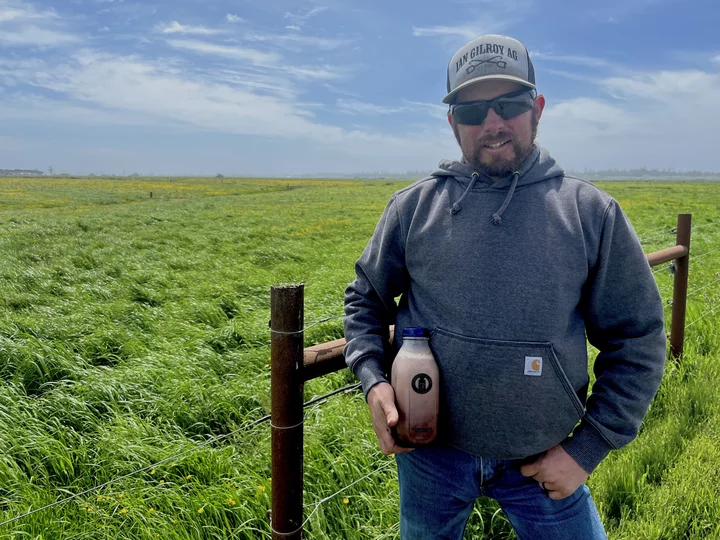
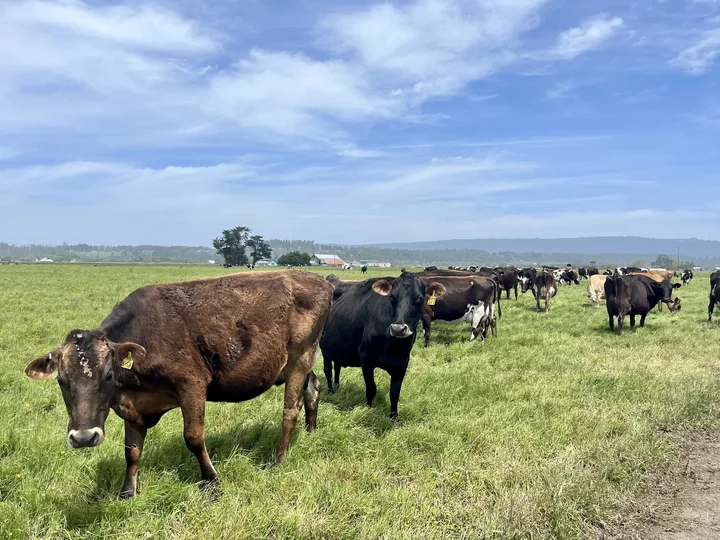
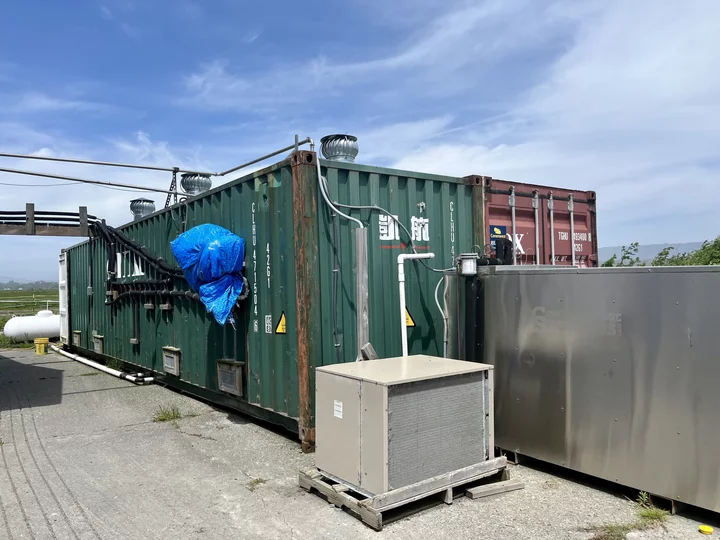
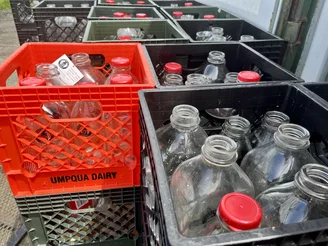
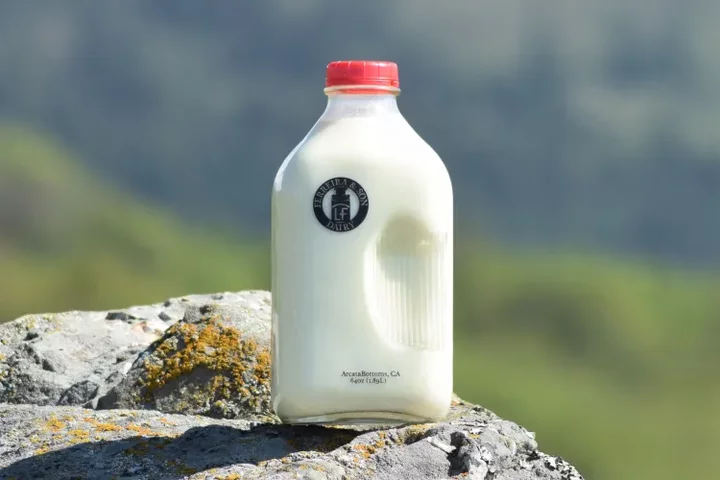
CLICK TO MANAGE